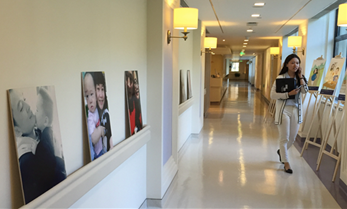In China, the biggest and most important market remains the emerging middle class. This demographic is large in size, has good spending power, and continues to be the golden egg for Chinese businesses.
With this in mind, we’ll shed light on the importance of cornering this emerging middle class and tapping into it’s potential.
To do this, here’s an insightful case study on one of our recent clients – United Family Healthcare.
About United Family Healthcare
Before writing down our goal, strategy, and rationale, let’s analyze the client.
In this case, our client is none other than United Family Healthcare (UFH). Founded in 1997, this medical organization has progressively built deep-seated roots in America and China.
In sync with UFH, Chindex has quietly developed a topnotch medical establishment in China. This institution incorporates world-class medical equipment, treatment technology, diagnostics, and continually sustains the highest healthcare standards.
During its early years, United Family Healthcare’s vision involved providing medical assistance for large corporations (i.e. employees, executives) including companies such as Coca Cola. To do this, the company sought high-end medical talents (physicians, nurses, technicians) from prominent Western countries including the United States. These professionals were expected to hold world-class medical degrees while maintaining top-tier healthcare standards.
At present time, UFH is an English-based hospital but does offer services in a variety of other languages including Mandarin.
The Problem:
So, what’s the problem?
UFH managed to gain critical acclaim in months for its exceptional healthcare benchmarks. Whether it was the standard of care, world-class facilities, or a combination of both, they managed to earn the respect of numerous major corporations.
However, there are only so many corporations in China!
This is where we come in as a problem solver. UFH wanted to spread the word and target a different target market (i.e. local Chinese parents with a baby on the way). Their time in Qingdao had been unproductive. The foreign-funded hospital couldn’t get the locals to come in and this meant a lack of patients. The corporations were able to send a handful of patients but not enough to manage a successful healthcare facility.
Despite this problem, UFH had one thing under control and that was its brand awareness among locals. It was noted as the finest medical facility in the area with distinctively higher rates.
The Goal
What did we plan to do for UFH?
It started by creating a vision/goal. We wanted to help build an emotional connection between the facility and its target audience (local Chinese parents).
To do this, we would map out a clear-cut strategy involving the use of emotional trigger points, trust, and relationship-building. This was the best way to connect with local Chinese parents and get them to sign up for maternal services.
Our Approach & Strategy
It was time to come up with a well-thought-out plan.
The proposal had to include a wide-ranging theme, which would help spread the word and win over UFH’s target audience. To augment our chances, we spent days analyzing various data points including emotional drivers, pain points, and motivators.
Our research showed, the average Chinese mother received ample physical support from her family (post-delivery). However, she didn’t appear to receive emotional support/appreciation, which immediately put a damper on her spirits.
This tied in with the average Chinese father refusing to display signs of affection, emotion, and appreciation for their significant other. As a result, this put additional stress on the mother during an important phase in her life.
With this in mind, we understood it was time to build a campaign around emotional support and gratitude. The goal was to humanize the experience while illustrating how UFH could and would provide remarkable moral support post-delivery.
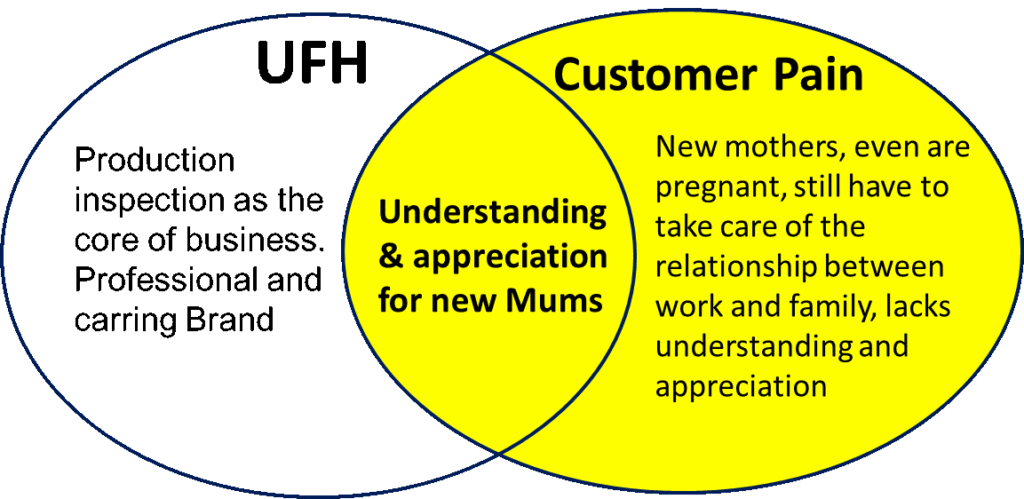
Data and Reasons for Using This Strategy
In a study published by Mckinsey Digital Labs, there was a noticeable shift in customer behavior, expectations, and perceptions. According to its statistical analysis, approximately 61% of all customers wanted a personalized connection with the brand.
The middle class was expecting to be pampered, appreciated, and respected. In fact, the same study showed how 79% of all customers considered online reviews to be dependable sources of information. This trend wasn’t limited to one niche, it was seen across the board!
As a result, we knew a winning plan had to include emotional empathy and relationship-building techniques. Otherwise, the campaign would fail. With this in mind, we began working on the content campaign in China.
With our theme in mind, we had to look at how to distribute this message. Where would we go to spread this material to the masses? Our team realized China was becoming an Internet-centric community with desktops, laptops, mobile devices, and social media platforms. We had to leverage these devices and networks to our advantage.
The campaign led us in many directions including solutions involving online news searching platforms, Weibo, Wechat, KOL, and User Generated Content (UGC). We had one goal in mind and that was to build brand awareness and connect with our target audience.
Our Content Strategy
UFH was going to use a series of comics and videos to generate interest. The goal was to create a joint-production with local families. Our campaign would include a “thank you” theme where mothers would visit UFH for check-ups and fathers would illustrate their frustration of sitting in the waiting room.
Of course, we realized comics wouldn’t get the message across properly. This meant our comics had to be recorded on camera. A well-produced video would spread quickly and be easier to watch.
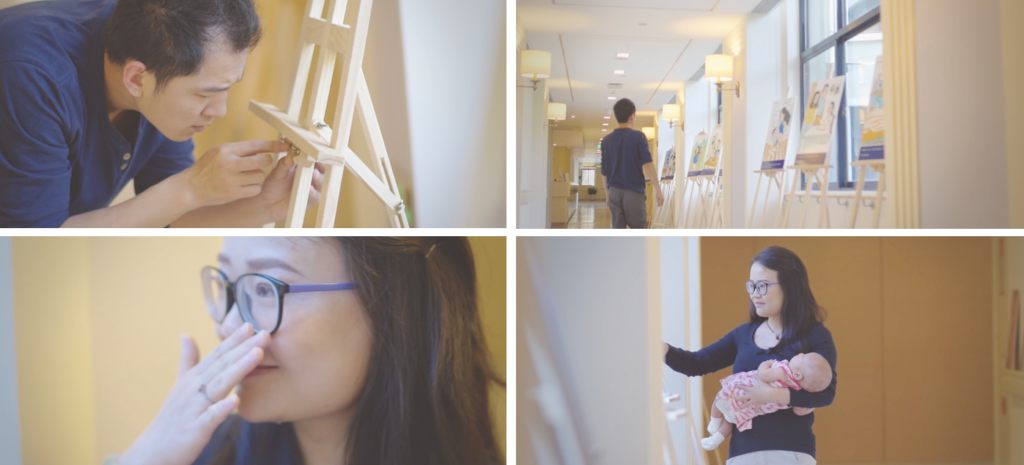
Let’s take a look at how we managed to put the campaign together.
Step: #1: Choosing the Protagonist
The first question was simple. Who were we going to show in the video?
Our team landed on Mr. Wang, a Shandong cartoonist. His wife would give birth to her second child and Mr. Wang had already participated in a previous case study on “Men’s confinement.” This made him the ideal fit.
With the right protagonist, we could finally make the story come to life.
Step #2: Working on the Cartoon Illustrations
Before anything else, we sat down with a highly acclaimed illustrator to etch out a detailed comic. This narrative would showcase a mother during her pregnancy.

Step #3: Creating the Video
It was time to bring the comic to life! We realized this would be the hardest step, but the plan had been laid out. Our team had chosen a beautiful location and was ready to go.
Step #4: Distribution of Our Video
The video had been shot and it was beautifully done! This meant we could start spreading the word. In days, we had received attention from 71+ media outlets including some of the region’s biggest news organizations.
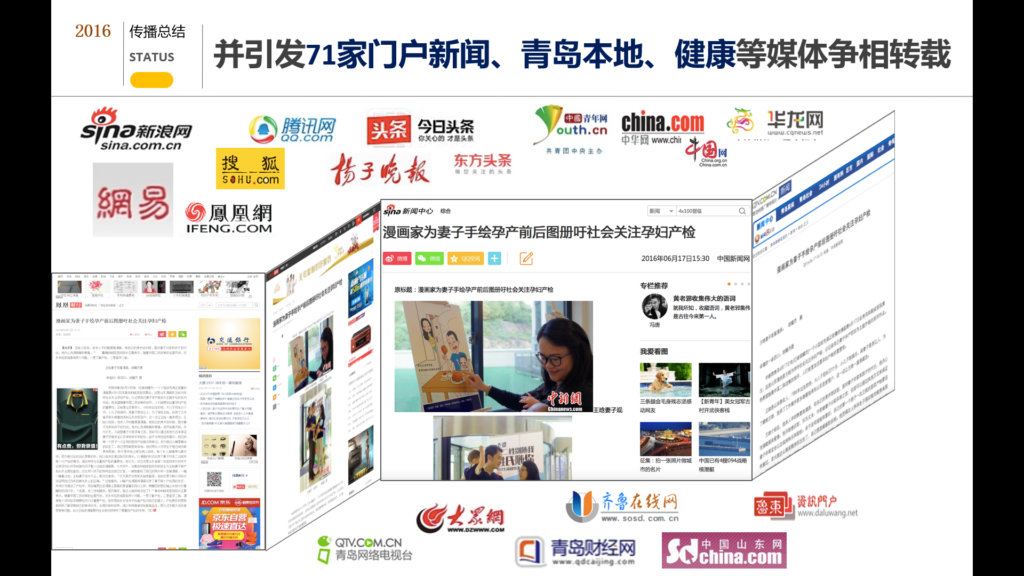
Step #5: Video Distribution
The distribution was straightforward. We setup accounts on some of the biggest websites and generated 250,000+ views in a single day. Yes, 250,000+ views!
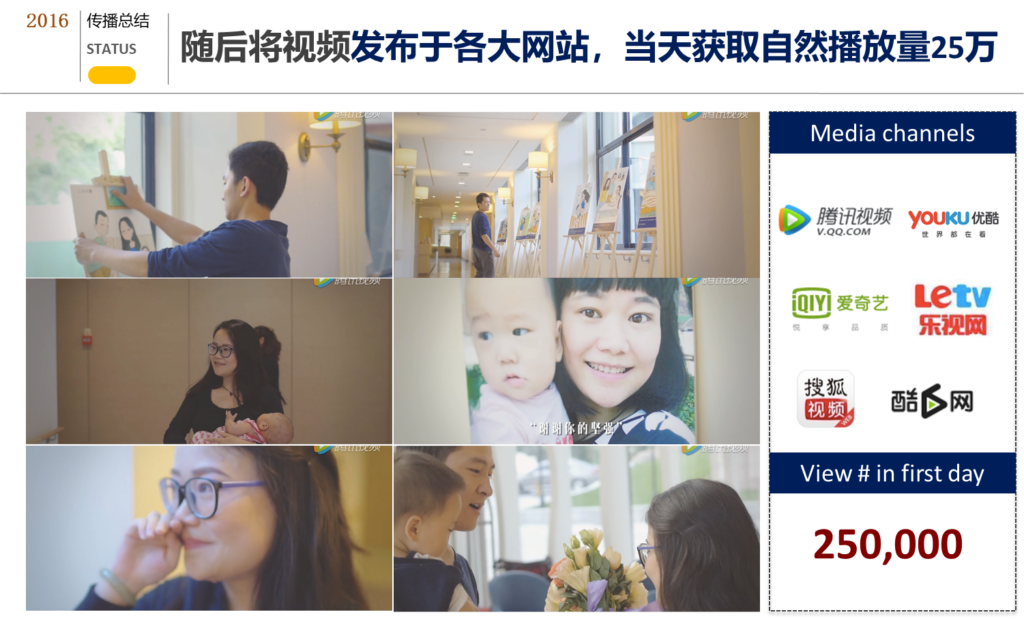
Step #6: Content Distribution on Weibo and Wechat
Weibo was a major catalyst for our success. With the “Weibo Hot Topic” list, our video managed to produce a remarkable 910,000 searches. Of course, at the same time, we were also making use of the official Sina Weibo account, which managed to push the view count to 11,530,000.
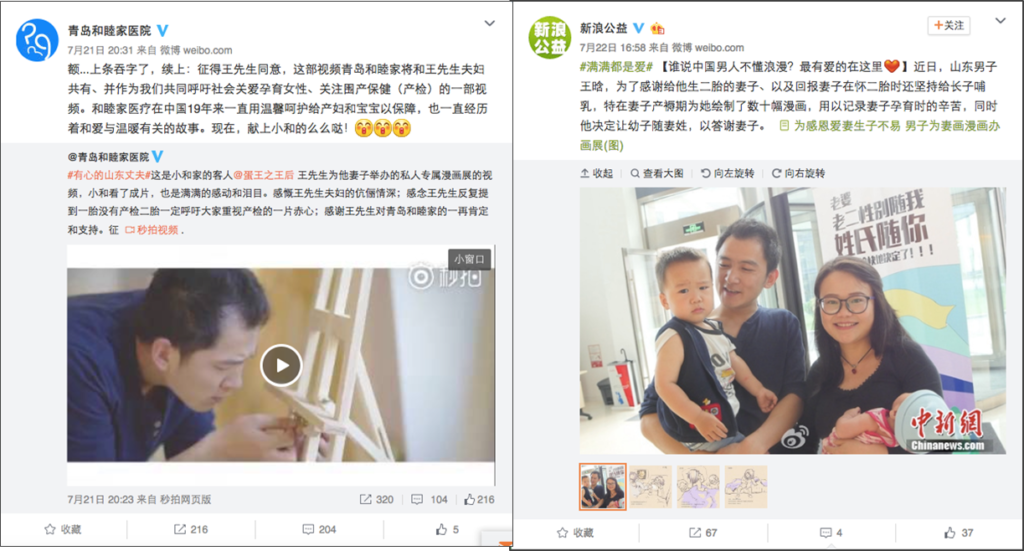
Step #7: Going Viral with UGC
User Generated Content (UGC) is a wonderful tool for success in marketing. Readers were openly generating content, sharing, and spreading the word. As our research had shown, hitting the right emotional triggers can inspire people to act. In days, people were actively creating relevant content.
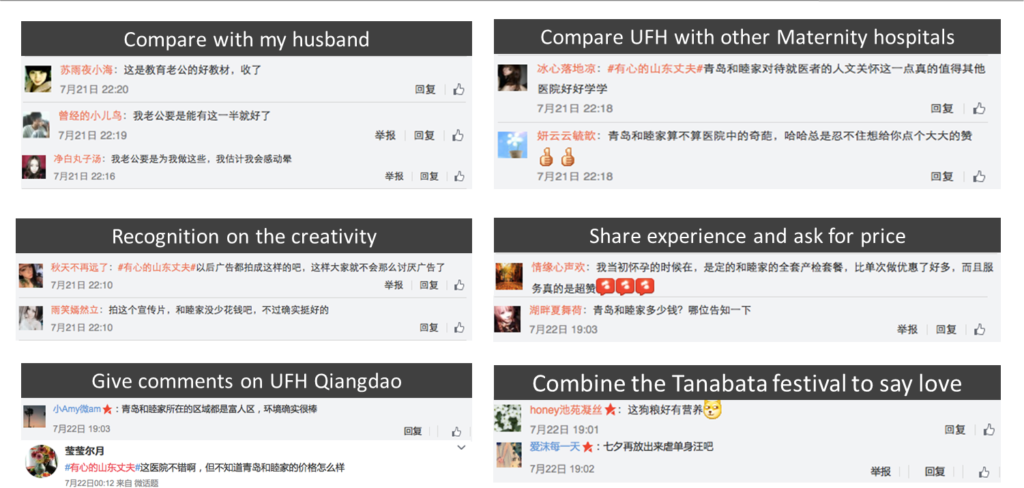
Step #8: Going All-out With KOL
The last step was to use KOLs (key opinion leaders). In our case, we managed to access Han Xiaolai and brought him to Qingdao. On top of this, Han Xiao Weibo created an inspiring message called “Fate” to acknowledge Qingdao UFH. Since our officials were on top of these events, we managed to once again find a spot on the “Hot Topics List.”
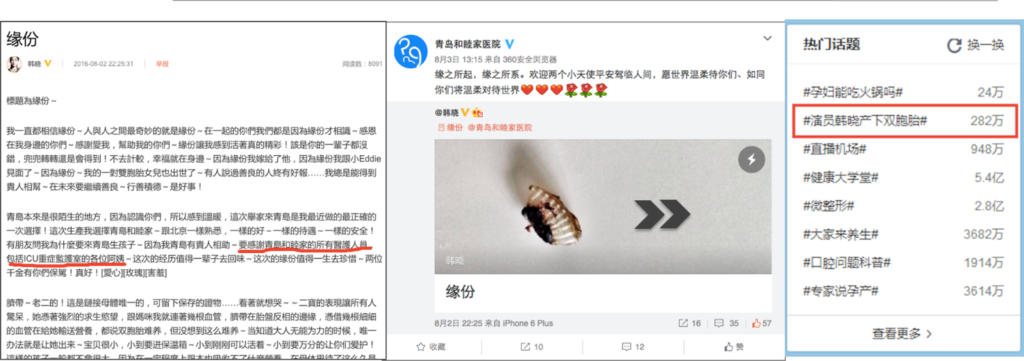
Our Results
In the end, our campaign was a major success.
Over 100+ mainstream media outlets had reported on our video and acknowledged what UFH stood for. This meant we had tripled the value of our investment in a matter of days!
There were supplementary benefits of our campaign too.
The Qingdao UFH official account on Weibo saw a rise of 2,000+ subscribers. While the Wechat official account saw an increase of 5,000+ subscribers.
Plus, Qingdao UFH climbed to the 4th spot on Baidu’s search results.
